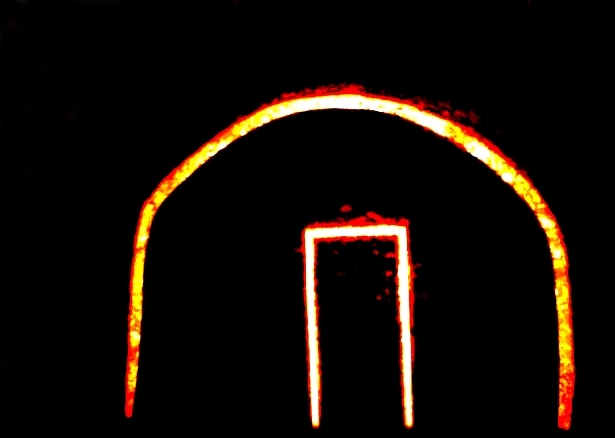ILLUMINATING WHAT ISN’T THERE.
Interview with Giovanna Summo on Fabrizio Crisafulli (excerpts from)
ed. by Lucrezia Valeria Scardigno
In the way Fabrizio uses it, light is a moving, living thing. Its special character enables it to relate to the actor on stage as the composition is being prepared and acted out. It also has the architectural function of delimiting space, and not only physical space, but also imaginary space. A creative space that interacts with the actor. In Shō, Fabrizio worked on the spatial and visual imagery in particular and I worked on the imagery of movement. Obviously we were in constant contact. During the course of this process these languages, both alive and present, enteredinto a relationship with one another, creating an alchemy. One thing influenced the other, following a kind of internal dynamism.
Working with light is generally only possible for a limited number of days, and in Fabrizio’s productions it involves a type of work that needs to be handled with great care: the darkening of space, exact distances, and mobility. It’s a work of great skill and also very complex technically, which is often perfected even during performances. It’s a truly alive work, where the actors can determine the timing of the light and the light can outline the timing and intensity of the action. One thing that has always fascinated me about Fabrizio’s work with light is his way of illuminating what is not there and the illusion of what is there.
(…..)
What do you think of your experience with the ‘theatre of places’? What do you like about this form of theatre?
The ‘theatre of places’ has been one of the most extraordinary experiences of my life. In this type of work we switch off from our everyday lives and go to work for a period of time in a new place, often outdoors, even with the inconvenience this might entail. But it’s great, because it’s teamwork. We all go together to see the place and let our imaginations run loose. Of course, Fabrizio guides the project, but everybody brings their own creativity, we compare ideas, we look at the other people working, we work in close contact.
Before working in the ‘theatre of places’ with Fabrizio, I’d participated in the urban production La Passione. Pasolini al Mandrione, directed by Marcello Sambati and Daria Deflorian. That was a very intense experience too. Later, I led the ‘dance of places’ workshops, which for me are a very vital experience, including the people I meet: the participants and locals. Working with local residents is very important for an artist. It’s a very fertile exchange.
Fabrizio’s ‘theatre of places’ was another such discovery. He completely transforms the place while leaving its essence intact. It becomes recognisable and at the same time is transformed into a wondrous other world through which you begin to think that the same wonder could exist in life. You feel that art is close, possible, that it’s inside you. In your everyday life. It’s a thing of beauty, revolutionary, revitalising. When I saw Fabrizio’s work for the first time, I had the same feeling as when I first saw the work of Pina Bausch, because in his work I saw my desire for development and growth.
Lucrezia Valeria Scardigno (ed.), Illuminating What Isn’t There. Interview with Giovanna Summo, in NIka Tomasevic (ed.), Place, Body, Light. The Theatre of Fabrizio Crisafulli, 1991-2011, Artdigiland, Dublin 2013, pp. 313-315.
